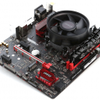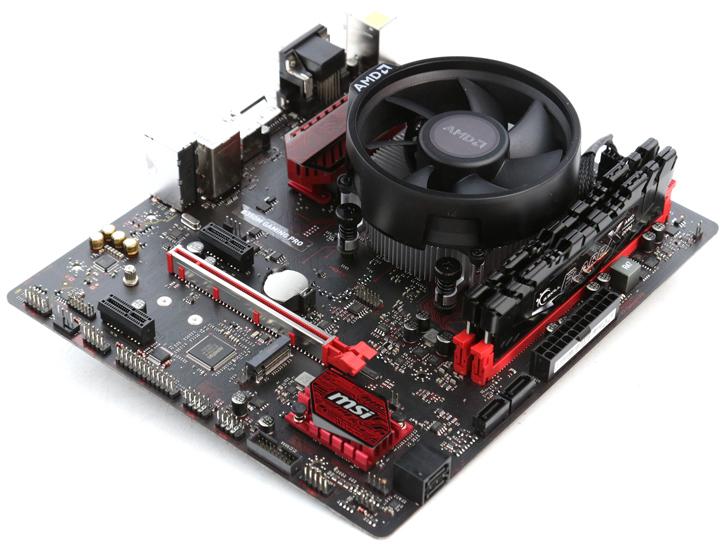Introduction
MSI B350M Gaming Pro motherboard
A good value proposition at 77 bucks.
In this article we'll review the MSI B350M Gaming Pro, with the release of Vega based desktop APUs (Raven Ridge) from AMD, it is interesting to peek at the low-cost B350 chipset based motherboard, in this review, we'll pair the €77,- MSI motherboard with a Ryzen 5 2400G and take it out for a spin.
Yes the sub 79 USD/EURO MSI B350M Gaming Pro is a lovely looking Micro ATX motherboard that offers all the basic features you need to build a nice mainstream PC. Especially with Vega based desktop APUs (Raven Ridge) from AMD, the Ryzen 3 2200G and Ryzen 5 2400G this could be a lovely offering.
AMD announced two APU based on vega initially, both compatible with existing B350 and X370 motherboard with merely a firmware update. But X370 might be a notch too pricey and perhaps too much if you can suffice with an integrated graphics solution. AMD released Ryzen 3 2200G and Ryzen 5 2400G that AMD are the first CPUs with embedded Radeon Vega architecture graphics. There are other notable features to mention as well, The APUs now have the official default support of DDR4-2933 in dual-channel operation. And for AMD faster memory is important for two reasons, the first being it reacts better to CPU bound gaming, and secondly, system memory is an elementary link for AMD's APU to get the highest performance possible. For integrated graphics, the memory cannot be fast enough as that system memory is used.
- AMD Ryzen 3 2200G with Radeon Vega 8 graphics
- AMD Ryzen 5 2400G with Radeon Vega 11 graphics.
The APUs are developed under codename Raven Ridge, it has a 209.78mm2 and roughly 4.94 billion transistors. These are both quad-core processors, Ryzen 5 gets SMT (hyper-threading). Thus the 2400G gets SMT enabled, 8-threads. The Radeon 2200G however just has four cores enabled and SMT (threading) disabled as AMD does not want to cannibalize their own Ryzen 5 series.
The Ryzen 3 2200G and Ryzen 5 2400G APUs will be configured as a single CCX configuration (4+0), a 'normal' Ryzen 5 1400 processor typically is confirmed as a 2+2 CCX configuration. With the G series you'll notice some other subtle changes, the base clock frequencies compared towards regular Ryzen 3 and 5 is going upwards, the Ryzen 3 2200G, for example, will get a 3.5 GHz base clock with a boost towards 3.7 GHz. The Ryzen 5 2400G, will take that up a notch and starts at a 3.6 GHz base-clock with a boost to 3.9 GHz. Keep in mind, and in comparison, the fastest clocked Ryzen processors are all clocking in at a maximum 4.0 GHz, plus XFR range. So the APUs are pretty close to that as a theoretical threshold as well. Both parts are rated at a 65W TDP. There are more changes compared to regular Ryzen though, 4MB opposed to 8MB L3 cache, but the same 512K L2 cache per core.
But back to the MSI B350M Gaming Pro, a mainstream mobo that seems to be a good match for the 200G series. it's not an overclockers board, you get just two DIMM slots, but other than that it's fitted with all the basics you need, including Gigabit Ethernet as well as a full speed M2 slot and four SATA3 connectors. If you pair it with a Ryzen 2000G APU slash processor, please do be aware of the fact that PCIe lanes move from x16 to x8 lanes in the “Raven Ridge” design. Let's head on over to the next page where we'll talk a little more about the architecture and then slowly but steadily dive into the benchmarks.


